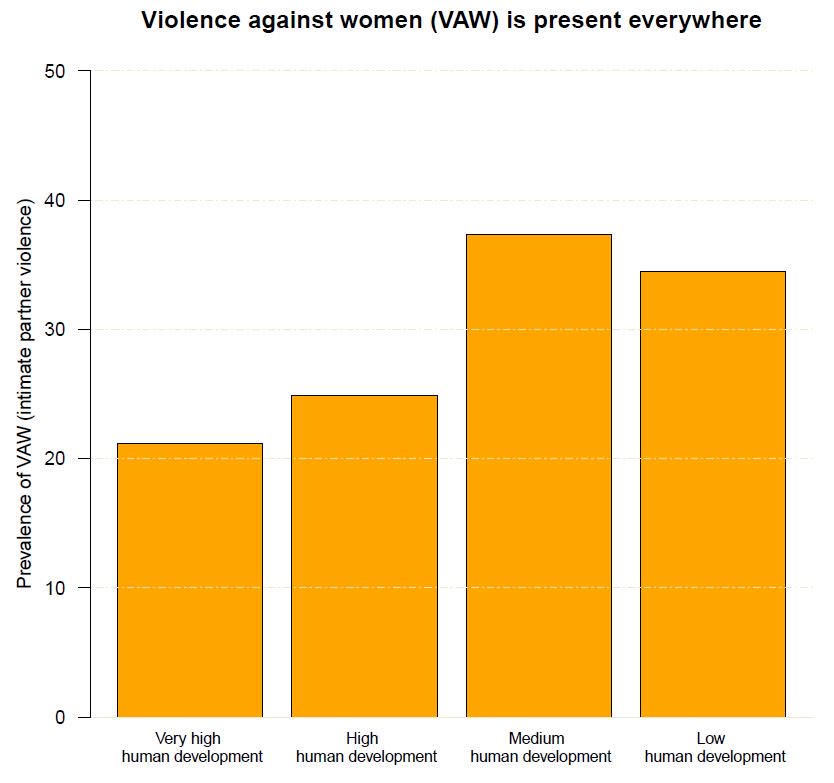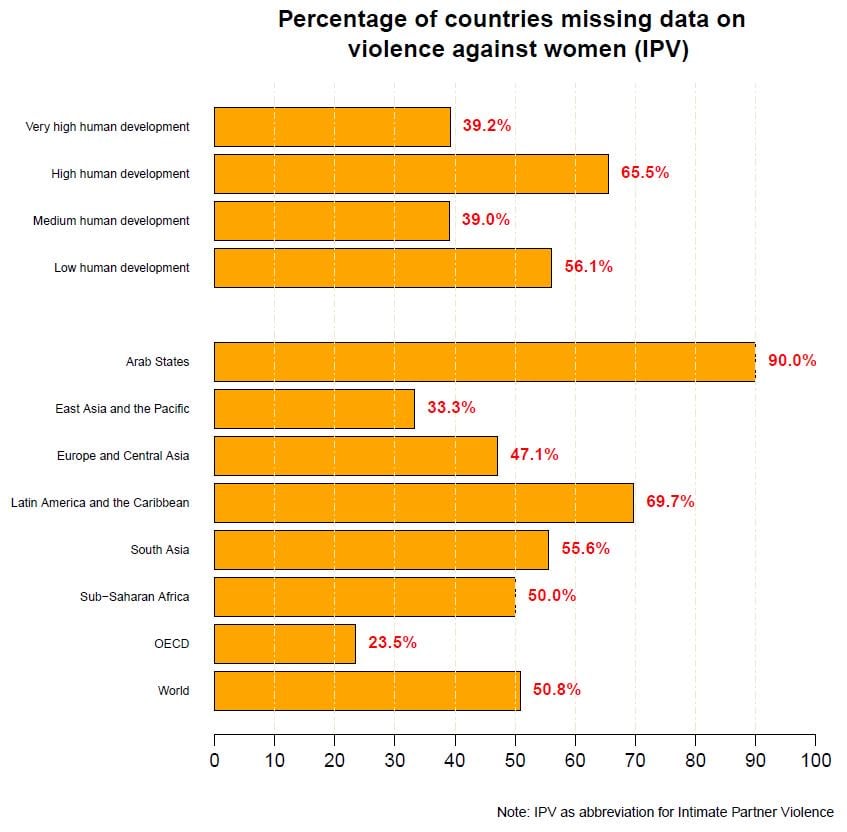One third of women—and more than two-thirds in some countries—have experienced physical or sexual violence inflicted by an intimate partner or sexual violence inflicted by a non-partner, according to the World Health Organization.
Violence against women and girls (VAW) is a global phenomenon that affects all societies and cuts across boundaries of age, socioeconomic status, education and geography.
The importance of eradicating VAW from a human development perspective is obvious. But how can the human development perspective help to tackle such a broad, complex and sensitive issue?
The 2016 Human Development Report “Human Development for Everyone” (2016 HDR) sheds light on two important issues: power relations and lack of data.
In her paper for the 2016 Human Development Report, Ayesha Banu argues that VAW is grounded in gendered social structures rather than individual and random acts. Embedded in cultural norms and religious and patriarchal value systems, violence is often justified and internalized by both men and women, who legitimize it as “natural” and “right”.
Violence can be reinforced by discriminatory laws and exclusionary social norms. Figures from the 2016 HDR speak for themselves: in 46 countries laws do not protect women from domestic violence. Each year, 15 million girls in developing countries marry before age 18 and that about 200 million women and girls alive today have gone through female genital mutilation and cutting, putting them at extreme and unnecessary health risks.
Such patterns of violence cut deep into many societies and if they are not tackled there is little doubt they will be perpetuated across generations. Much needs to be done to tackle these barriers and the 2016 report makes a number of recommendations.

Closely related to this is an urgent need for more and better data to inform policy making worldwide: given these shocking figures, it is almost as shocking how little is known about VAW across the world.
Target 5.2 of the Global Sustainable Development Goals calls for the elimination of “all forms of violence against all women and girls in the public and private spheres, including trafficking and sexual and other types of exploitation.” However, the two indicators linked to this Target are classified as Tier II, meaning they are not regularly measured in many countries.
As the graph below shows data on violence against women and girls is scarce. At the global level only half of countries collect data although there are important variations across regions. VAW data are missing for most of the Arab States (90 percent) and for many countries from Latin America and the Caribbean (70 percent). Only in two groups – the OECD countries and the East Asia and the Pacific region – do the majority of countries have VAW data.

There are several reasons, not least, that it is notoriously difficult to collect such data when the victims can fear coming forward or even, tragically, feel ashamed. Data can also be politically sensitive, especially in some cultures.
A good deal of work is now underway to gather more evidence. UN Women’s Global Database on Violence against Women seeks comprehensive information on all forms of VAW, while UNICEF publishes key child protection indicators including “female genital mutilation/cutting” and “child marriage,” as well as data on “attitudes towards wife-beating.” The new Women, Peace and Security Index by the Georgetown Institute for Women, Peace and Security captures women’s rights violation in three dimensions: inclusion, justice and security. The OECD’s Social Institutions and Gender Index highlights the impact of social norms and discriminatory institutions on gender equality and women’s empowerment, including “restricted physical integrity” while the Gender Equality Index from the European Institute for Gender Equality includes measures of direct and indirect violence in EU countries across time.
VAW is also a key part of human development accounting and several measures are collected. In the HDR online statistical data, for example, one can explore data on women who have ever experienced violence from an intimate or a nonintimate partner.
But more systematic data collection, dissemination and analysis are needed to keep this topic at the forefront of the global development agenda.
So on the International Day for the Elimination of Violence Against Women, it is important to remind ourselves that human development cannot be achieved fully if half the population feels unsafe. If it is not safe for girls and women to go out by themselves, how they can go to school or work to realize their potential? If they do not feel safe in their own homes then what chance do they have of living a life of dignity?
The HDialogue blog is a platform for debate and discussion. Posts reflect the views of respective authors in their individual capacities and not the views of UNDP/HDRO.
HDRO encourages reflections on the HDialogue contributions. The office posts comments that support a constructive dialogue on policy options for advancing human development and are formulated respectful of other, potentially differing views. The office reserves the right to contain contributions that appear divisive.
Photo: © UN Women/Henriette Bjoerge


